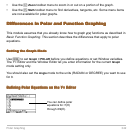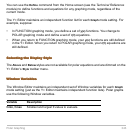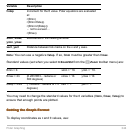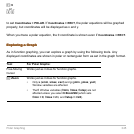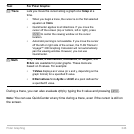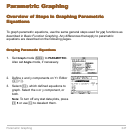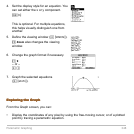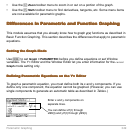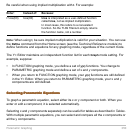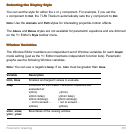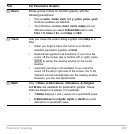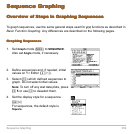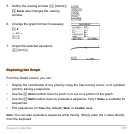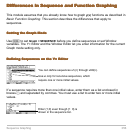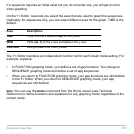
Parametric Graphing 350
Be careful when using implied multiplication with t. For example:
Note: When using t, be sure implied multiplication is valid for your situation. You can use
the
Define command from the Home screen (see the Technical Reference module) to
define functions and equations for any graphing mode, regardless of the current mode.
The Y= Editor maintains an independent function list for each
Graph mode setting. For
example, suppose:
• In FUNCTION graphing mode, you define a set of
y(x) functions. You change to
PARAMETRIC graphing mode and define a set of x and y components.
• When you return to FUNCTION graphing mode, your
y(x) functions are still defined
in the Y= Editor. When you return to PARAMETRIC graphing mode, your x and y
components are still defined.
Selecting Parametric Equations
Selecting Parametric EquationsSelecting Parametric Equations
Selecting Parametric Equations
To graph a parametric equation, select either its x or y component or both. When you
enter or edit a component, it is selected automatically.
Selecting x and y components separately can be useful for tables as described in Tables.
With multiple parametric equations, you can select and compare all the x components or
all the y components.
Enter: Instead of: Because:
t
ùcos(60)
tcos(60) tcos is interpreted as a user-defined function
called tcos, not as implied multiplication.
In most cases, this refers to a nonexistent
function. So the TI-89 Titanium simply returns
the function name, not a number.



